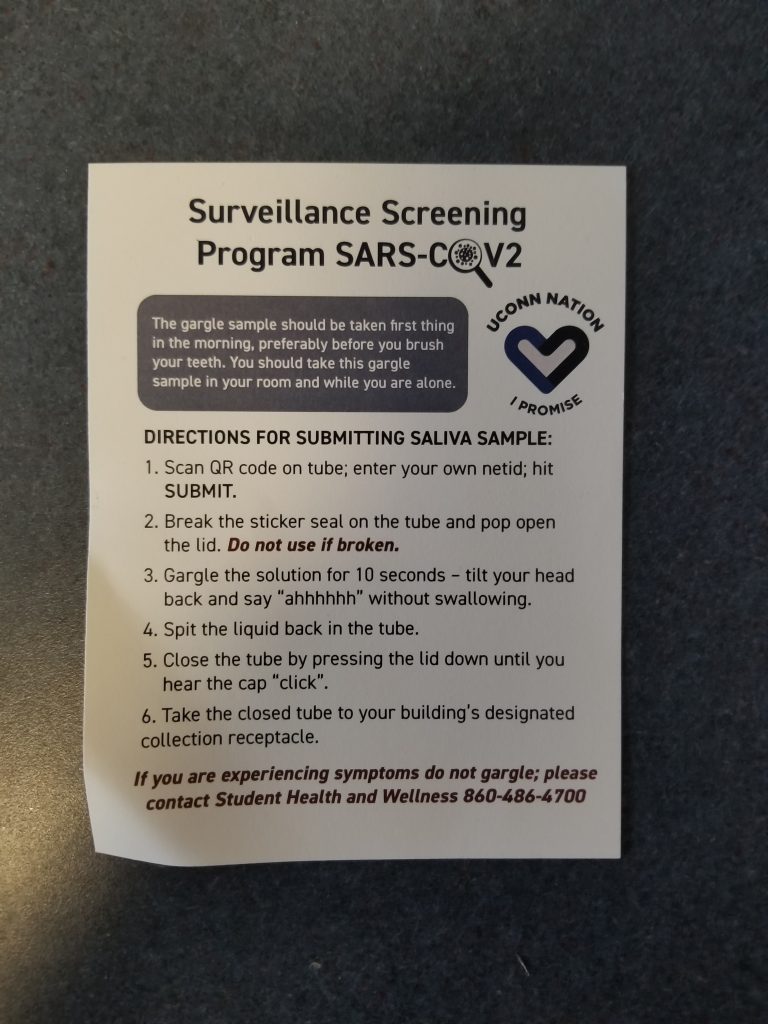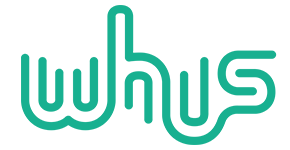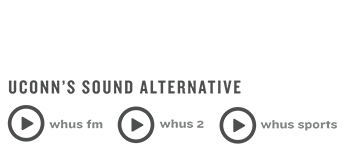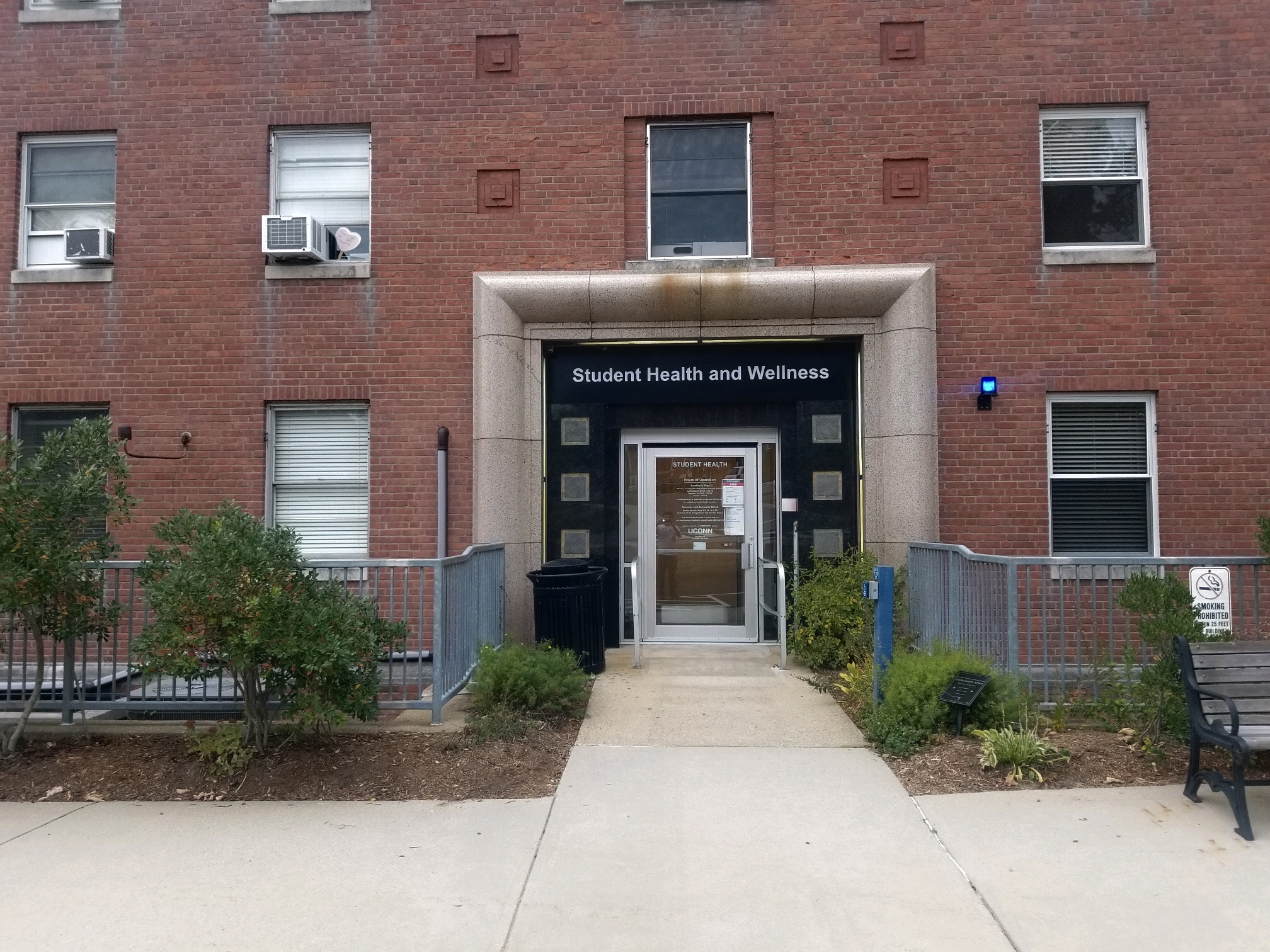By Jonathan Kopeliovich
In early September, UConn decided to implement an alternative method to surveillance testing in their quest for keeping our campus safe and open.
Enter saliva testing. Also referred to as pooled sampling, this approach physically pools together students’ saliva samples and identifies if the load is positive for COVID-19. This method is safer, cheaper and more efficient than surveillance testing, according to Dr. Kendra Maas, Facility Scientist at Microbial Analysis, Resources and Services and Dr. Rachel O’Neill, a professor in the Department of Molecular and Cell Biology.
Students don’t actually need to go to a clinic or a tent somewhere on campus to give their samples. Resident assistants in the dorms provide them with test tubes right in their own rooms. Students then gargle a solution and deposit their tubes in their designated dorm collection container to be sent off to a laboratory. One can collect 1,000 saliva samples and dump ten or 30 of them into a single sampling group.
“The aggregate pooling approach allows us to take a big snapshot of campus at,” O’Neill said. “You can do 1,000 people, but you can just run 100 tests.”

Not only is this test more efficient at capturing data and more accessible to students, but the speed is what really sets this apart from surveillance testing. Results only take five to six hours to come back. These factors allow Student Health and Wellness to easily target parts of campus for further testing.
The invisibility of the virus makes itself harder to target. Symptomatic residents are easier to identify and test for COVID-19, but saliva testing allows UConn to catch asymptomatic cases more easily. Saliva testing also makes it easier to lock in on small groups for surveillance testing.
“If multiple members of a family unit have been exposed, they’re all going to be in different pools by random chance,” O’Neill said. “All those pools will show up positive and then we can triangulate that back…”
But saliva sampling has its limitations.
“If somebody’s got a really low viral load and you take that sample and pool it with fifty others, it may get below that limit of detection if those other forty-nine are negative,” O’Neill said.
O’Neill, Maas and their team of screeners follow precise CDC guidelines to limit the number of samples in a group, in turn, limiting this problem from happening.
There are some concerns about genetic privacy and data management, O’Neill and Mass said. But, a protocol is put into place to secure the genetic samples so that it’s next to impossible to identify which sample belongs to which person. To combat the large number of samples that need to be processed every day, O’Neill said cross-departmental work, like IT forming a database for quicker processing or teams of student technicians labeling test tubes, could turn this into “a community-based project!”
The results of saliva testing have provided hope for the lab workers and doctors.
“We’re in great shape. Everybody’s doing a really good job in following the social distancing, keeping their masks on, washing their hands,” Maas said. “Those are the boring and simple things that have to be done to keep an outbreak under control and people are doing them.”
Gravity and Grace (with My Free Mickey) by SackJo22 (c) copyright 2020 Licensed under a Creative Commons Attribution Noncommercial (3.0) license. http://dig.ccmixter.org/files/SackJo22/61348 Ft: My Free Mickey; Coast Starlight (Shimoda Shuffle) by spinningmerkaba (c) copyright 2019 Licensed under a Creative Commons Attribution Noncommercial (3.0) license. http://dig.ccmixter.org/files/jlbrock44/60685 Ft: shimoda, SiobhanD


